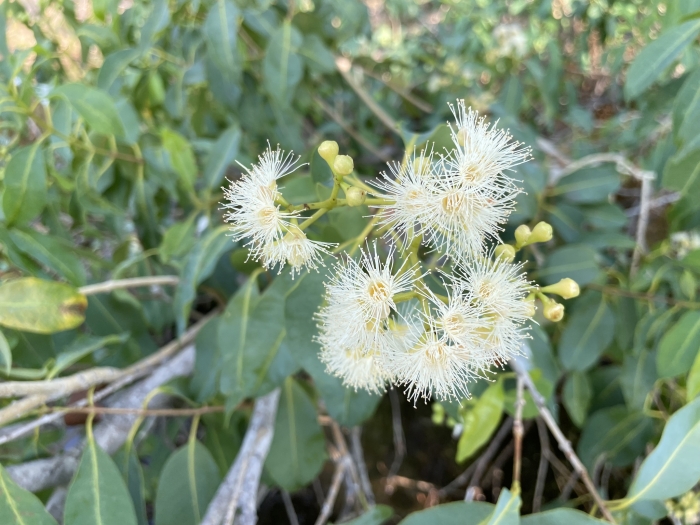Waterberry
(Syzygium guineense)
Waterberry (Syzygium guineense)
/
/

Robert Taylor
CC BY 4.0
Image By:
Robert Taylor
Recorded By:
Copyright:
CC BY 4.0
Copyright Notice:
Photo by: Robert Taylor | License Type: CC BY 4.0 | License URL: http://creativecommons.org/licenses/by/4.0/ | Rights Holder: Robert Taylor | Publisher: iNaturalist | Date Created: 2022-10-09T14:23:33Z |

























Estimated Native Range
Summary
Syzygium guineense, commonly known as Waterberry, is a versatile evergreen tree native to a variety of habitats in sub-Saharan Africa, including lowland and montane forests, humid savannas, and mangrove edges. It can grow from sea level to an altitude of 8202 feet. This species can reach heights of up to 82 feet and is characterized by a dense, rounded crown with glossy, dark green leaves. The tree produces small, fragrant, white to cream-colored flowers that are rich in nectar, attracting a plethora of pollinators during its flowering season. Following flowering, it bears edible purple or red berries that are enjoyed by both humans and wildlife.
Waterberry trees are valued for their dense shade and are often planted in Ethiopian homesteads for this purpose. They are also recognized for their drought tolerance and are used as a famine food source. The fruits and leaves are edible, with the fruits being consumed fresh or used to make jams and drinks. In cultivation, Waterberry trees require moderate water, well-drained soils, and can tolerate a range of light conditions from full sun to partial shade. They are not commonly found in the horticultural trade but may be used for reforestation projects or as ornamental shade trees in large gardens or parks.CC BY-SA 4.0
Waterberry trees are valued for their dense shade and are often planted in Ethiopian homesteads for this purpose. They are also recognized for their drought tolerance and are used as a famine food source. The fruits and leaves are edible, with the fruits being consumed fresh or used to make jams and drinks. In cultivation, Waterberry trees require moderate water, well-drained soils, and can tolerate a range of light conditions from full sun to partial shade. They are not commonly found in the horticultural trade but may be used for reforestation projects or as ornamental shade trees in large gardens or parks.CC BY-SA 4.0
Plant Description
- Plant Type: Tree
- Height: 15-30 feet
- Width: 15-30 feet
- Growth Rate: Moderate
- Flower Color: White
- Flowering Season: Summer
- Leaf Retention: Evergreen
Growth Requirements
- Sun: Full Sun, Part Shade
- Water: Medium
- Drainage: Medium
Common Uses
Bird Garden, Edible*Disclaimer: Easyscape's listed plant edibility is for informational use. Always verify the safety and proper identification of any plant before consumption., Low Maintenance
Natural Habitat
native to a variety of habitats in sub-Saharan Africa, including lowland and montane forests, humid savannas, and mangrove edges
Other Names
Common Names: Waterwood, Guava Tree, White Umdoni
Scientific Names: , Syzygium guineense, Calyptranthes guineense, Memecylon lopezianum, Syzygium fleuryi, Syzygium guineense var. guineense,
GBIF Accepted Name: